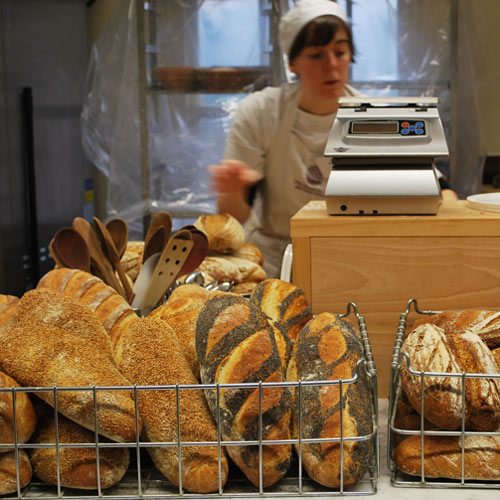E5 Bakehouse
Our interview with the man behind Hackney’s delicious sourdough invasion
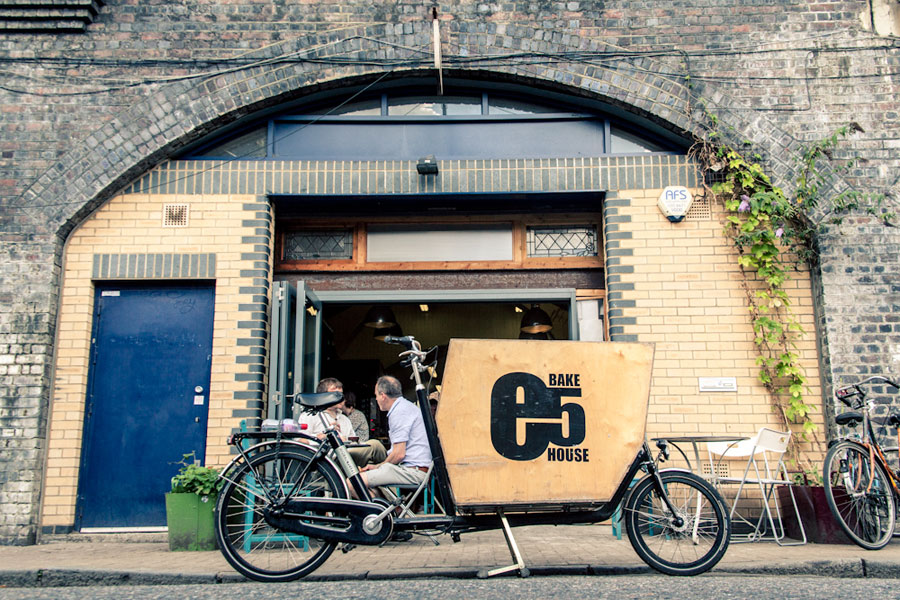
Chances are if you’ve eaten at one of East London’s more discerning restaurants of late, you’ve come across delicious sourdough bread baked at e5 Bakehouse. Tucked under one of the brick railway arches lining London Fields, the bakery is the work of Ben Mackinnon, who built the enterprise from scratch just over two years ago. Now, he and a team of artisans bake more than 300 loaves of sourdough bread a day—from Russian rye to Spelt—and deliver it by bike to around 30 Hackney establishments.
We recently sat down with Mackinnon to learn more about the bakehouse and cafe, and some of the secrets behind e5’s distinctly tasty organic breads.
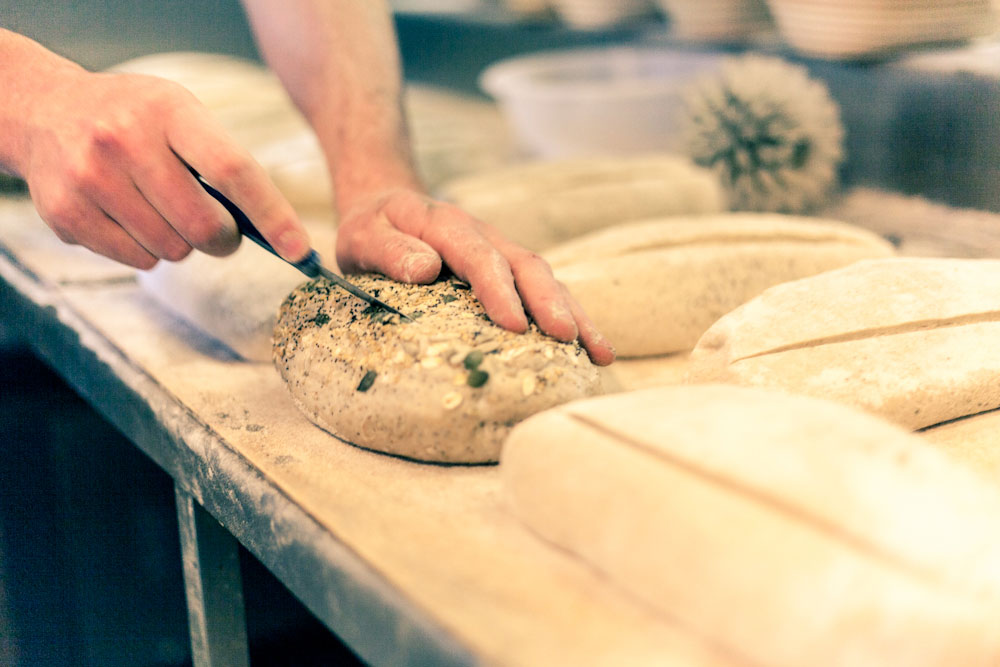
How did you get into baking?
About two and a half years ago I was kind of scratching my head about what to do with my life. I was working in this job that sounded really good—sustainability consulting—and I kind of wanted to do things, and I still do, that just try and make the world a cooler place to live in. I was getting kind of bored with consulting, so I took bit of time out, and had a great summer fixing up a boat up, but it wasn’t really going anywhere.
Then I did a bit of traveling and I was in the south of Spain where my parents have this wicked little house in a village and there was some flour left in the cupboard by my mum—and I made bread in the past because I think it’s kind of cool to be more self-sufficient. So I thought, “well I’ll make some bread.” The next day I was talking to my dad and I was like, “I’m thinking about becoming a baker.” I was expecting a snort or something down the phone and he was like, “Oh, quite a good idea.” It really surprised me. Then the next day he sent me a link to a place called The School of Artisan Food, which had just opened up in the north of England. I thought about that for a little while, and then I went over to Morocco and the idea just kind of grew.
I was in fairs and I walked into this little bakery in one of the main streets, and I loved it. There was a massive oven going back, a wood-fired oven, and one guy working it with a long peel. They invited me upstairs to a tiny room above the oven so it was very warm (which is kind of good conditions for the break they were making) and I was like, ‘Oh this feels nice!’ I just felt so good in there, so I signed up for the course.


How did that evolve into e5 Bakehouse?
When I came back I was lucky and got a bit of freelance work in sustainability, and I arranged with a local pizza oven to use their oven. And then I just kind of played the two careers off against each other and the bread-making just kept feeling a lot better. So I signed up a couple neighbors to get bread every Saturday so that I had at least 15-20 people to sell bread to every week.
If I was going to do it seriously I needed a space. I thought, “I really love that wood-fired oven back in Morocco.” I like the concept of cooking on a renewable fuel. I asked the girl who runs Happy Kitchen next door if I could move in and build a wood-fired oven and she was cool with it. It caused chaos in that place for about two months, walking through bricks and sand. I built the oven in one place then realized in was the wrong place and we had to move it. I can’t believe what they put up with, it was remarkably fortunate.
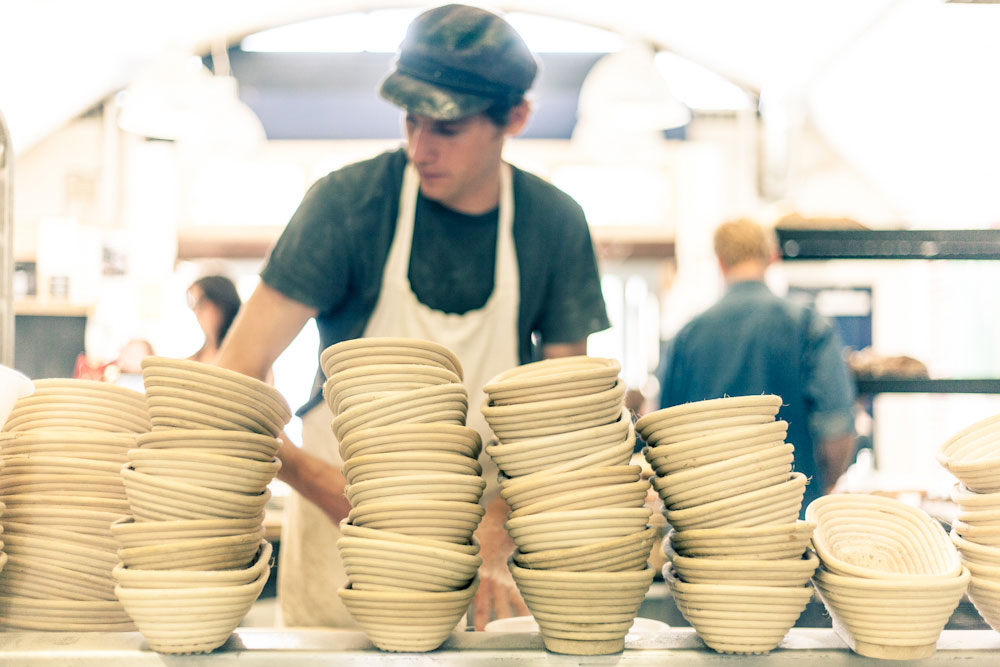
How did you know how to build a wood-fired oven?
Oh, I didn’t. My sister was around, and I spent quite a lot of time hanging out with a dude who is a medieval kiln expert, so he was into firing pottery in wood-fired kilns. He was giving me lots of ideas, but that was more the route of a domed oven. My sister and I built a domed pizza oven in my backyard, but that was never commercial size. And then she found this design for a rocket oven, which is an efficient way of burning fuel—it was developed for Africa where fuel is more limited.
We got fire bricks, and then housing bricks from scrap, we stole paving slabs from the council—it’s amazing what you find when you don’t have money, you forage. We found the sand we needed, a bit of cement here and there. I found fire cement, got loads of clay from Suffolk, where I grew up, which is traditional clay and really good for heat. We just kind of cobbled it together. It’s a bit more like a modern oven, it’s a big metal box with a fire underneath and a deck and level in between and two big trays. The gases kind of go around the sides of the box and heat up the box. It was remarkable it worked, I couldn’t believe it, really—it fucking worked. It could bake about 16 loaves at a time. But you’re not really allowed to burn wood, it seems, in a central area, although maybe in the future I’ll get permission for that. We’re now operating with an electric oven, but the rest of it is very sustainable.

Did you build out the bakehouse yourself?
Yeah, we laid the floor, and when we moved in we built this front counter. I got these lampshades from a warehouse that was knocked down on Kingsland Road, I bought this sliding door second-hand and the stained glass comes from a few doors down. We just got this posh kitchen unit built by some local craftsmen, I suppose it’s escrowing up a bit, but again we’re using more stuff salvaged from out back—there are some welders next door who throw quite a lot out. It’s just about making things a bit more durable, and also supporting guys who we really get on with and want to work with.
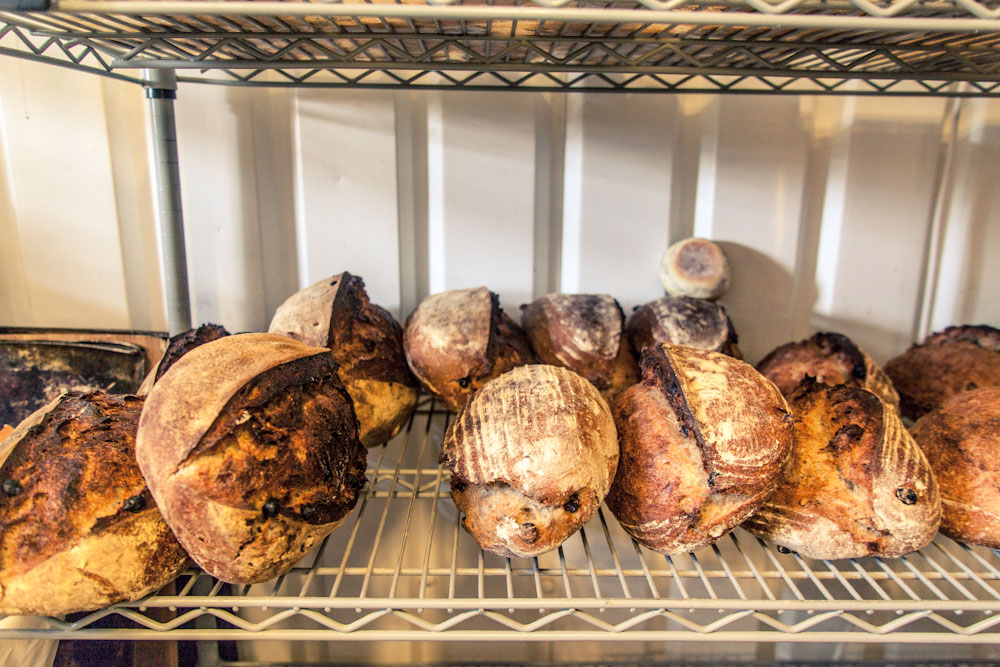
You bake a few sourdough varieties, which are you most known for?
Hackney Wild is our most popular bread, it takes three days to make. We just use organic flour, and that bread uses our organic sourdough bread as the starter, and that makes up about one-third of the final dough. It spends about two days fermenting in the fridge, then we take that and mix it with fresh flour and water, leave it for a little while for the yeast to really get going. Then we add a bit of salt, and we fold it over the course of about three or four hours and then divide it up, shape it, and let them prove in banatons, which are kind of wicker baskets, or in a pouch that’s natural linen. Then we put them in the fridge in the back, and we leave them there overnight. That’s where the fermentation happens really well, at about 5ºC—the types of bacteria that we want to cultivate operate nicely in that temperature. These organic acids are created, and that’s why our breads taste so good.
See more photos in the slideshow below.. Images by Andrea DiCenzo.












